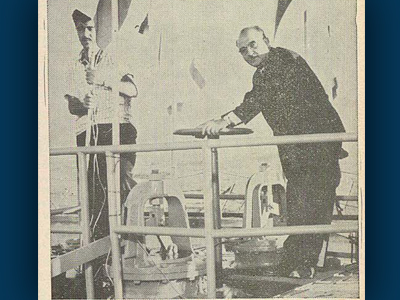Jerusalem’s New Reservoir Is Opened

November 18, 1958
A 2½-year project is completed with the opening of a water reservoir for Jerusalem at Bayit Vegan. The project began in 1955 as both a means to prevent a repeat of the water shortage caused during the siege of the city during the 1948 War of Independence and to promote urban development in and around Jerusalem. The project, which cost between 1.5 million and 2 million Israeli lira to complete, is financed by capital raised through Israel Bonds.
Finance Minister Levi Eshkol opens the valve allowing water to flow into the new reservoir, the largest in Israel at the time of its construction. Minister of the Interior Israel Bar-Yehuda says he hopes that “these live waters would never be needed to save the city, but to help it absorb hundreds of thousands of newcomers.”
Both the lack of and high cost of water in the city prevent industry from developing in the capital. Attracting industry is seen as a vital step in developing the city’s economy and providing employment for its rapidly expanding population. In 1958, the city’s population is over 150,000, up from about 84,000 at the end of the 1948-49 war. Before the opening of the reservoir, Jerusalem has the highest water rates in Israel.